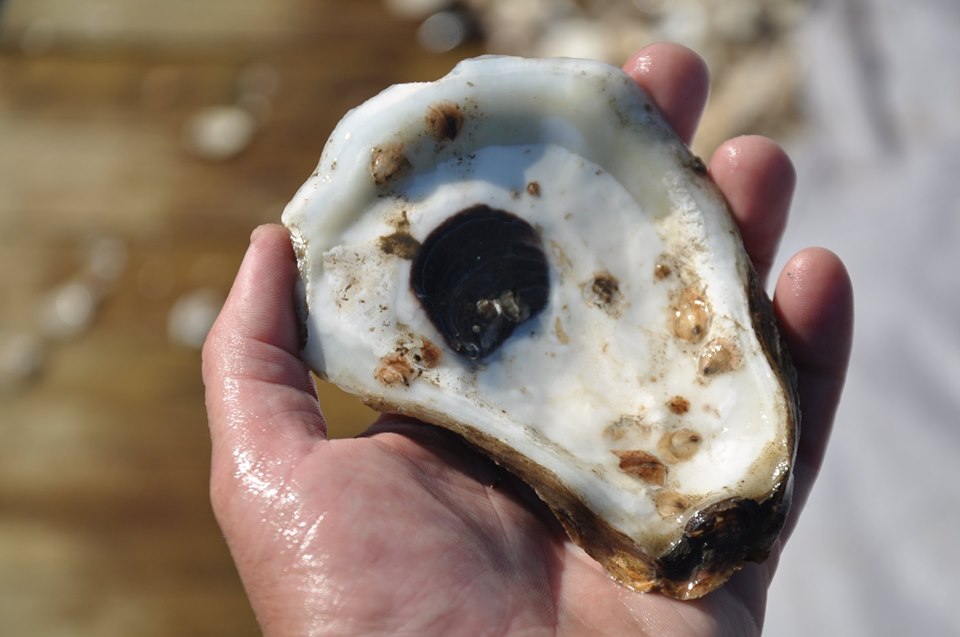

There are dozens of drop off points in our region if you’d rather donate them for recycling then save them for your garden. Or you can boil them and then set them outside to dry. Lastly, in addition to providing habitat for new oysters, they also provide homes to blue crabs, striped bass and red drum. They also help balance water pH, reducing events like red tides. Oyster shells are the preferred substrate for new oyster spat and can help grow more robust populations by providing more area for the oysters to latch on to. Refurbish the ReefĪccording to a recent article from the VCU Rice Center, oyster shells are also crucial for rebuilding natural oyster populations in our bays. For best results, boil and break the shells up. Use 4 to 6 pounds of shell per 100 square feet. Lastly, they deter pests like moles and voles. They also help strengthen plant cell walls, improve nitrate absorption and form beneficial enzymes in your soil. Oyster shells have high amounts of calcium which can balance soil pH levels. Save the SoilĪdding oyster shells to your mulch in late Spring and early Summer can give you garden a big boost. Saving and recycling your oyster shells is a great way to maximize their value and benefit the soil and critters in your region. They have numerous ecological benefits, and they continue giving after they’ve been shucked and slurped. Not only are they delicious, they’re also high in zinc and protein.

This long-term monitoring in Wellfleet Harbor will provide a data set from a high resource area for comparative study in the future.Oysters are truly a miracle food. Research shows an increase in biodiversity and oyster population by 90%, establishing 6 million oysters in three years that provided a 70% nitrogen sink, improving the water quality in this area.īecause of Wellfleet’s unique environment and this restoration site, scientists from federal, state and private entities come to Wellfleet to conduct research. This site is being monitored by UMass Boston Green Harbors Project for biological changes and the Center for Coastal Studies for water quality assessment. This is the first experimental no-take shellfish sanctuary which is supported by the local shellfish constable and Division of Marine Fisheries as a means of evaluating the environmental benefits with a particular focus on water quality. Two acres of this larger effort is designated as an Oyster Propagation site. This designation recognized the combined recycling and habitat restoration effort of SPAT and its collaborators. In 2012, SPAT and the Town of Wellfleet were acknowledged for this unprecedented effort and were awarded a Municipal Innovation Award. That is going to do a lot for creating a healthy wild oyster fishery habitat in Wellfleet Harbor! Combined with the Town of Wellfleet’s “cultching efforts” including another 2,500 tons of shell, we have restored over 35 acres of habitat! As a result of this addition of shell approximately 60 million new oysters will grow in the harbor that’s 15 times the annual harvest rate! As these oysters mature they will filter over 16 million gallons of water in the harbor each day and remove 400 pounds of nitrogen per year. Over the past six years, the OysterFest and its partners have reintroduced over 30 tons of shells back into the harbor. This effort has taken significant steps to reducing solid waste at the event while vastly improving the water quality and fish habitat in Wellfleet Harbor. The Shell Recycling program was developed in 2009 through a partnership between SPAT, the National Oceanic and Atmospheric Administration, National Marine Fisheries Service (NOAA) and the Town of Wellfleet Wastewater Committee. The following spring, these shells were then reintroduced into Wellfleet Harbor to create habitat for shellfish and other marine species, enhance the amount of spat (baby oyster spawn) in the harbor, improve water quality by filtering particles and pollutants, and to protect the shoreline by creating a natural barrier from erosion. As a result, the Festival’s total solid waste stream was reduced by 32%. During the 2018 Festival, nearly 5 tons of the shell from consumed shellfish were collected. Presentation Title, Setting and deploying hatchery-produced spat-on-shell on Louisiana public oyster reefs in Southeast Louisiana for oyster restoration. The OysterFest strives to be a “green event” by recycling as much as possible, but most importantly all of the oyster and clam shells.


 0 kommentar(er)
0 kommentar(er)
